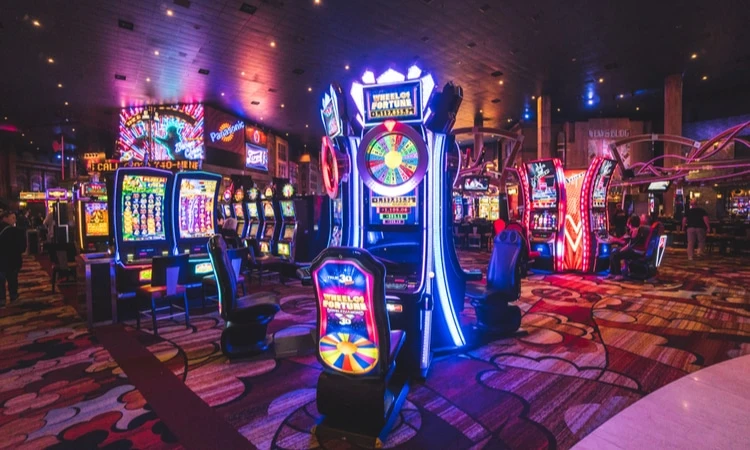Whether the cause is cannibalization, online competition, or COVID concerns, the 2021 revenue numbers for Pennsylvania’s casino industry illustrate the challenges that brick-and-mortar properties have had returning to their former levels.
The year-end figures released Thursday by the Pennsylvania Gaming Control Board summarizing the gaming industry were great overall — $4.73 billion in commercial revenue, a 38.7% increase from the prior high of $3.41 billion in 2019. The revenue brought $1.93 billion to state and local government treasuries from the blended tax rate of about 41% from all forms of gambling.
But those broad numbers disguise how tough things were for long-established casinos. The industry’s revenue gains of 2021 were nearly all due to the $1.11 billion generated by online casinos and $340.1 million from online and retail sports betting. Those figures far exceeded prior highs, as the still-young iGaming industry continued growing by leaps and bounds.
The state now has 16 casinos where gamblers walk up to play slots and table games and eat, drink, and be entertained. For most of the past decade, however, only 12 existed, and in 2021, most of them couldn’t match pre-pandemic revenue levels.
As a whole, even the 16 (only 13 of which were open the entirety of 2021) came up shy of 2019’s gaming total of $3.27 billion. The slots and tables revenue totaled $3.21 billion in 2021. For the dozen that were also in business in 2019, they totaled just $2.87 billion, a 12.2% decline in same-casino revenue from the pre-COVID era.
Hard to parse each factor’s revenue impact
Many factors traditionally impact casino revenue, but there have been some special ones in Pennsylvania recently. It’s impossible to actually sort out the extent to which each of the following has influenced patronage at individual properties, but it’s natural to assume each has had some role.
- The opening of four new casinos since 2019 in Westmoreland, Philadelphia, York, and Berks counties (the latter was only just in December, however) presumably impacted revenue of their closest competitors, a dynamic generally referred to in the industry as “cannibalization.”
- Pennsylvania is one of the few large casino states that also has a large, legal online casino industry, which gives gamblers the option of playing at home instead of driving to a venue.
- While Pennsylvania casinos weren’t shut down for a third of the year as they were in 2020, they dealt with many restrictions on operations the first half of the year. In a state with an older than average demographic, an untold percentage of the public also still had concerns that would have reduced their comfort with large social settings.
That’s not to say that all casinos experienced trouble. Two saw increases in slots and table revenue: Parx Casino, the state’s largest, up 0.5% to $617. 1 million; and Mount Airy Casino Resort, up 1.9% to $185.6 million.
Among the others, their decline in revenue doesn’t necessarily reflect an equivalent financial decline overall. For one thing, casinos have generally reduced their costs by offering fewer amenities, reducing the number of slot machines (about 17,000 now at the original 12 casinos instead of nearly 25,000 two years ago), and cutting staff. The gaming board’s annual report covering the fiscal year ending June 30 showed the 12 casinos with 11,868 employees in 2021 compared to 16,717 two years earlier.
With all that in mind, the table below shows how the 10 casinos failing to keep pace with pre-pandemic numbers fared in 2021 revenue compared to 2019, in order of the steepest decline:
| Casino | 2021 Revenue | Drop from 2019 |
|---|---|---|
| Lady Luck Nemacolin | $23.7 million | 27.9% |
| Rivers Philadelphia | $225.8 million | 27.6% |
| Harrah's Philadelphia | $187 million | 25.4% |
| Hollywood at the Meadows | $183.4 million | 22.2% |
| Wind Creek Bethlehem | $450.1 million | 13.8% |
| Hollywood Penn National | $207.4 million | 13.7% |
| Presque Isle Downs | $112.2 million | 13.3% |
| Rivers Pittsburgh | $335.4 million | 11.7% |
| Valley Forge Casino Resort | $130.2 million | 7.8% |
| Mohegan Sun Pocono | $210.3 million | 7.3% |
Philadelphia market impacted by Live!
It’s difficult to quantify impact on casinos specifically as a result of COVID or from competition with online operations — which still benefit them financially, if in a different way. But numbers can be attached to the specific markets where a new property opened and almost certainly poached some customers from preexisting casinos a short drive away.
Live! Philadelphia opened last year in mid-January, shaking up the market not just within the city — where Rivers Philadelphia already operated — but in the contiguous counties that contain Parx, Valley Forge Casino Resort, and Harrah’s Philadelphia, which, despite its name, is in Delaware County.
In 2019, the four casinos then operating in metropolitan Philadelphia generated $1.32 billion in revenue. In 2021, the addition of Live! Philadelphia, with its $209.3 million year, boosted the overall market to $1.37 billion. The original four, however, tallied just $1.16 billion of that, a 12% drop from two years prior.
While Parx itself weathered the new competition just fine, Rivers Philadelphia was naturally affected by the newcomer a few miles away, showing a 27.6% decline from two years earlier. Meanwhile, Harrah’s was down 25.4%. And while Valley Forge Casino Resort in Montgomery County was off only 7.8%, it has a new issue in 2022: It is the closest casino to Hollywood Casino Morgantown, the Penn National Gaming mini-casino that opened 30 miles to its west Dec. 22 and could siphon off still more customers this year.
Pittsburgh-area casino revenue declined overall
While the Philadelphia market was at least able to grow a bit overall in 2021, even if some operators suffered, the same could not be said in the Pittsburgh area with the addition of the Live! Pittsburgh venue in Westmoreland County.
That property spent its first full year in operation after opening in November 2020. As a mini-casino limited to just 750 slot machines, it did not make nearly as much money as its affiliated Philadelphia casino and reached $99.9 million from slots and tables in 2021.
Combined with Rivers Pittsburgh, Hollywood Casino at the Meadows, and Lady Luck Nemacolin, that brought the southwestern Pennsylvania casino total to $642.4 million. With just the three casinos in 2019, the market generated $648.2 million. The original three in and around Pittsburgh earned $542.5 million last year, a 16.3% reduction from their collective 2019 performance.
Lady Luck Nemacolin, itself a small “resort” casino with even fewer slots and tables than Live! Pittsburgh, declined in revenue by 27.9%, the most in the state. The Meadows was also off substantially, at 22.2%.
Rivers Pittsburgh was least affected by the newcomer, down 11.7%, which stands to reason in that the big venue facing downtown Pittsburgh has a big population base nearby and would attract many patrons for different reasons than a mini-casino.
Overall, statewide revenue numbers in the retail casinos were better in the latter part of 2021 than early in the year. It’s almost assured that with the new venues, an all-time high in collective slots and table revenue will be set in 2022, regardless of whether older properties do better.
And that’s even without two more mini-casinos to come: a Parx satellite that was licensed by the gaming board just this week to open in Cumberland County as soon as November, and another in the State College area that does not yet have inal approval from the state.
Photo: Shutterstock






